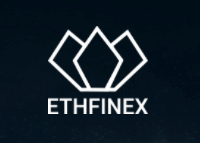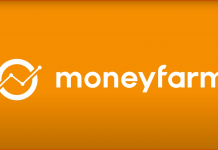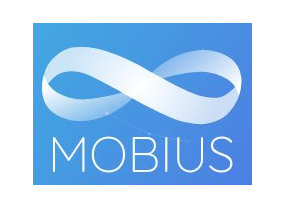Exclusive Interview with Kasper Rasmussen where we discuss the latest news on Ethfinex.
How will Ethfinex and Bitfinex differ from each other?
Ethfinex is a platform spun out of Bitfinex, with a vision to create a more community-centric digital asset investment platform. Ethfinex draws inspiration from the decentralisation lessons of Bitfinex, specifically with regards to the BFX token, to implement its own liquidity incentivisation token and decentralise ownership of the platform.
Motivation for Ethfinex stems from a desire to address and grow with the ever-increasing

number of tokens and tokenized assets on the Ethereum blockchain. Alongside the growth of this disruptive business model comes a desire for investors to analyse, discuss and trade these tokens, in a manner that is secure, fast and reliable. This has proven largely impossible for investors – information is scattered, communities are difficult to find and exchanges have been slow and archaic when adapting to the growing number of tokens.
Ethfinex’s vision is to create a community, resource, and information hub for investors to draw knowledge from, whilst simultaneously providing access to the most advanced, liquid, and secure trading platform available. Our vision is to gradually move towards a completely decentralised exchange platform, providing tools and modules to interact with, and contribute to, smart contract development and exchange protocol integration.
Will Ethfinex have its own token? Will there be an ICO? if so, when? Will trades
exclusively be paid for in this token?
A large component of Ethfinex is the integration of the Nectar (NEC) Token. NEC token is slightly unorthodox in the sense that there will not be an ICO, and holding the NEC token will not be a requirement for using the Ethfinex platform.
Instead, the Nectar token will act as a form of loyalty token, designed to maintain and optimise liquidity and market efficiency. Users who take on the role of market maker on the Ethfinex platform, or on any of the integrated decentralised exchange protocols, will automatically generate NEC’s as a loyalty reward and subsequently earn a stake in the future development, governance and success of Ethfinex. As more tokens are earned, the ownership structure of Ethfinex will become more decentralised, contributing to our vision of a truly community-owned exchange.
NEC will be an ERC20 Token, ensuring cross-compatibility with other exchange protocols interfacing with Ethfinex. This allows other protocols and exchanges to reward users for the liquidity they contribute.
As market makers and takers trade on the Ethfinex platform, they incur standard trading fees. Of these trading fees, a proportion are collected and directed into a smart contract. At the end of every 28 day cycle, NEC’s will be distributed to market makers in proportion to the total trading volume conducted by the market maker that month. For example, a market maker who holds 5% of the tokens issued in a certain period would be entitled to 5% of the rewards collected by the smart contract. Alternatively, rather than claiming the collected rewards, a market maker can choose to hold their tokens, or sell them on to another whitelisted market maker.

How many ERC20 tokens will be initially listed? Which ones will be listed first?
Initially, we’re looking to list around 20-30 ERC20 tokens, and Tether USD on Ethereum. This list of tokens was selected as they represent the most popular and well-established tokens among our community of potential users, and based on their projects already having strong communities of token holders. Amongst other factors was an earlier series of community questionnaires and polls, which gathered community feedback as to which tokens there was the highest listing demand.
What will be the requirements to list ERC20 tokens on the platform?
We want the listing process to be as user-driven as possible, with high-quality tokens being discovered and proposed by users. All tokens/projects will be able to create a discussion page on Ethfinex, where our users can discuss, analyse and rate the token. All tokens will receive ratings across a series of attributes, from their technical prowess to their team background and experience. This will allow popular and high-quality tokens receiving high ratings to be auto-discovered.
Tokens with high ratings will automatically move forward to the second stage of analysis by our compliance team. Amongst other aspects, our requirements will check the team behind the token is compliant with relevant laws in their own jurisdiction, data protection, and securities regulations. “Utility” tokens – those that power a network – are most likely to make it through this state or evaluation.
Will Ethfinex offer margin trading on ERC20 tokens?
Ethfinex will offer margin trading on ERC20 tokens, together with a P2P financing market, drawing valuable lessons from the experience and expertise of Bitfinex.
Margin trading must be carefully rolled out as adequate liquidity becomes available for each pair, and we will be carefully be monitoring the situation to establish margin as soon as safely possible.
In your opinion, on what basis should crypto traders evaluate a crypto exchange?
There are a number of factors which go into picking an exchange. A key for me, personally, is basic transparency. Traders need to be kept in the loop to make good trading decisions, and exchanges must be open and communicative for this to be possible. Following on from this is security, and whether the exchange takes the necessary precautions to minimise risk for users.
Another thing to consider is the consistency of the exchange, and whether they can deal with the traffic/load which follows certain news, and the selection of coins i.e. whether you can use the exchange to make the investments that you want to make.
Most important though is what we think differentiates both Ethfinex and Bitfinex, which is building innovation into everything we do. Rather than trying to keep pace with the industry, an exchange should be playing the role of driving change as one of the most important players in this financial revolution.
For example, Bitfinex has developed and is contributing open source tools such as a multisig wallet for IOTA and a decentralised microservices framework based on Bittorrent network, with many other larger projects planned. Ethfinex is investing heavily into decentralised exchange and will also be producing open source tools, has proposed a new standard for payments based on Ethereum, and has several innovative strategic relationships to be announced.
Both companies see this as the key moment to invest heavily into research and development, to act as industry leaders, and users can count on new features and improvements to continually surprise them.
For more information please visit: Ethfinex.com
We thank Kasper Rasmussen for the interview.











